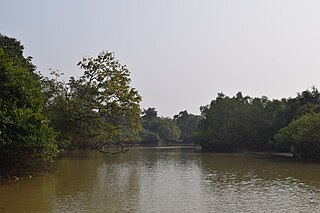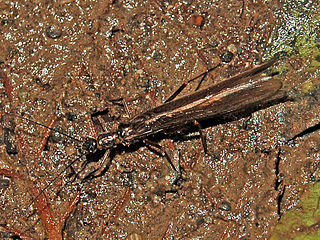
Convolvulaceae, known commonly as the bindweed or morning glory family, is a family of about 60 genera and more than 1,650 species of mostly herbaceous vines, but also trees, shrubs and herbs, and also including the sweet potato and a few other food tubers.

Tilapia is the common name for nearly a hundred species of cichlid fish from the coelotilapine, coptodonine, heterotilapine, oreochromine, pelmatolapiine, and tilapiine tribes, with the economically most important species placed in the Coptodonini and Oreochromini. Tilapia are mainly freshwater fish inhabiting shallow streams, ponds, rivers, and lakes, and less commonly found living in brackish water. Historically, they have been of major importance in artisanal fishing in Africa, and they are of increasing importance in aquaculture and aquaponics. Tilapia can become a problematic invasive species in new warm-water habitats such as Australia, whether deliberately or accidentally introduced, but generally not in temperate climates due to their inability to survive in cold water.

The Integrated Taxonomic Information System (ITIS) is an American partnership of federal agencies designed to provide consistent and reliable information on the taxonomy of biological species. ITIS was originally formed in 1996 as an interagency group within the US federal government, involving several US federal agencies, and has now become an international body, with Canadian and Mexican government agencies participating. The database draws from a large community of taxonomic experts. Primary content staff are housed at the Smithsonian National Museum of Natural History and IT services are provided by a US Geological Survey facility in Denver. The primary focus of ITIS is North American species, but many biological groups exist worldwide and ITIS collaborates with other agencies to increase its global coverage.

Elaeagnus angustifolia, commonly called Russian olive, silver berry, oleaster, or wild olive, is a species of Elaeagnus, native to western and central Asia, Iran, from southern Russia and Kazakhstan to Turkey, and parts of Pakistan. As of 2020, it is widely established in North America as an introduced species.

Bhitarkanika Mangroves is a mangrove wetland in Odisha, India, covering an area of 650 km (400 mi) in the Brahmani and Baitarani river deltas.

Eurasia, also known as Steel Peak, is a 308.9 meters (1,013 ft) tall supertall skyscraper located on plot 12 of the MIBC in Moscow, Russia. The mixed-use skyscraper occupies a total area of 207,542 square metres (2,233,960 sq ft), and houses offices, apartments, a hotel, and a fitness center. It is the sixth-tallest building in Russia, the seventh-tallest building in Europe, and the 72nd-tallest building in the world. Construction of Eurasia started in 2006 and was completed in 2014.

The Leuctridae are a family of stoneflies. They are known commonly as rolled-winged stoneflies and needleflies. This family contains at least 390 species.

Elmidae, commonly known as riffle beetles, is a family of beetles in the superfamily Byrrhoidea described by John Curtis in 1830. Both adults and larvae are usually aquatic, living under rocks in fast-flowing shallow areas of streams, such as riffles, feeding on algae and biofilms. There are more than 150 genera and 1,500 described species in Elmidae. The oldest record of the group is Cretohypsilara from the Cenomanian aged Burmese amber.
Aradus vadosus is a species of flat bug in the family Aradidae. It is found in North America.

Lepidostoma is a genus of bizarre caddisflies in the family Lepidostomatidae. There are more than 150 described species in Lepidostoma.
Paraleuctra is a genus of rolled-winged stoneflies in the family Leuctridae. There are more than 20 described species in Paraleuctra.

Hylesinus is a genus of crenulate bark beetles in the family Curculionidae. There are more than 180 described species in Hylesinus.

Hibana gracilis, the garden ghost spider, is a species of ghost spider in the family Anyphaenidae. It is found in the United States and Canada.

Sobarocephala is a genus of flies in the family Clusiidae. There are more than 110 described species in Sobarocephala.
Paraleuctra sara, the Appalachian needlefly, is a species of rolled-winged stonefly in the family Leuctridae. It is found in North America.

Ik-Vershina is a rural locality in Malinovsky Selsoviet, Belebeyevsky District, Bashkortostan, Russia. The population was 18 as of 2010. There is 1 street.
The 2018–19 Eastern Europe Cup was a season of the FIS Cross-Country Eastern Europe Cup, a Continental Cup season in cross-country skiing for men and women. The season began on 22 November 2018 in Vershina Tyoi, Russia and concluded on 27 February 2019 in Syktyvkar, Russia.
The 2018–19 Eastern Europe Cup was a season of the FIS Cross-Country Eastern Europe Cup, a Continental Cup season in cross-country skiing for men and women. The season began on 12 November 2019 in Shchuchinsk, Kazakhstan and concluded on 1 March 2020 in Kononovskaya, Russia.












